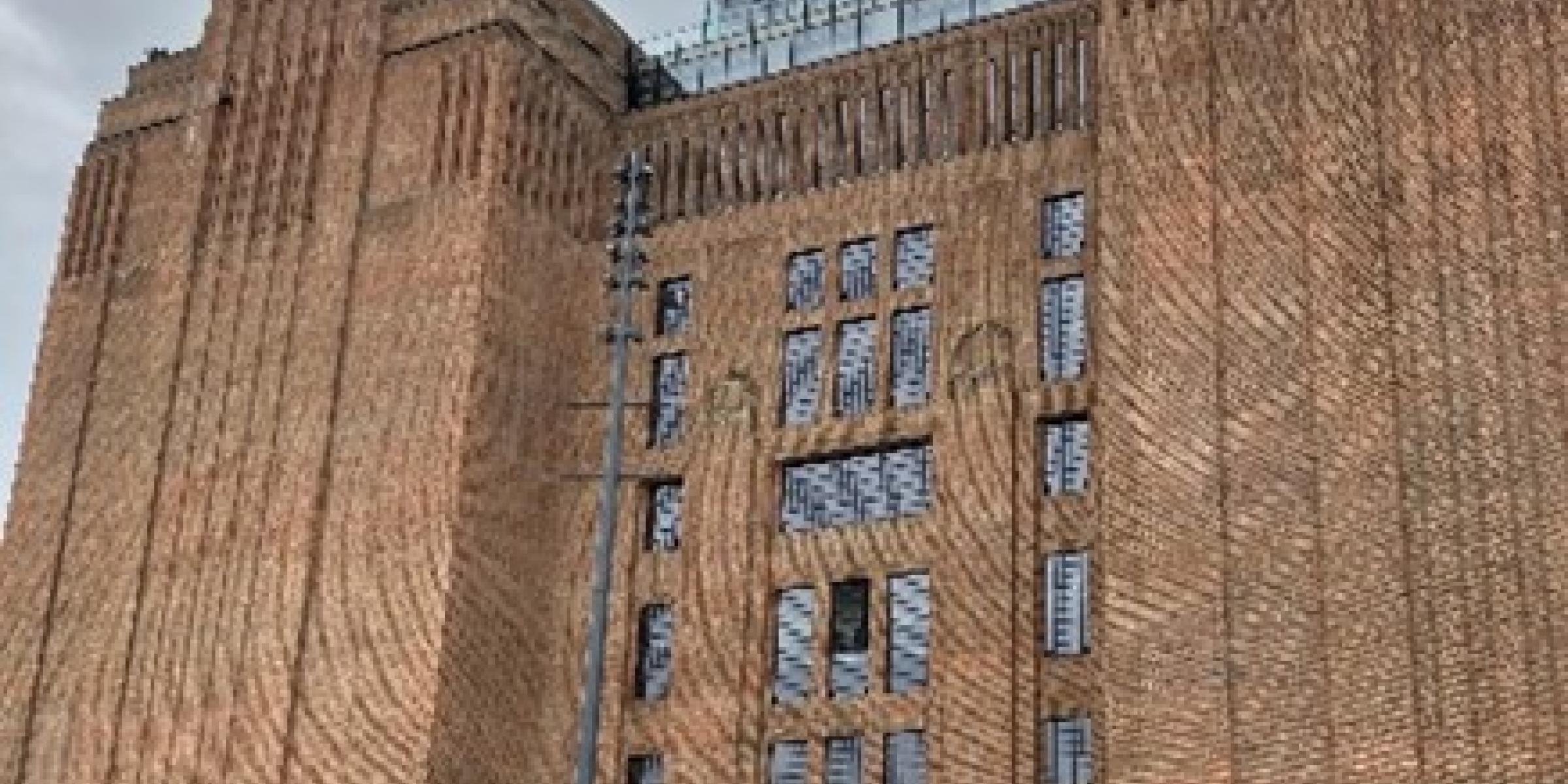With the last of their Lent term examinations done and dusted, thirty eager (if bleary-eyed) members of the RE03 - Real Estate Development MPhil class set out for London’s Battersea Power Station, one of Europe’s most ambitious urban redevelopment projects. The first RE03 field trip since the pandemic, arranged and led by Affiliated Lecturer Marc Mogull, gave students the chance to apply theory they’d learned in the classroom to a large-scale, real-world development facing a unique set of challenges given the site’s heritage.

Totalling forty-two acres, the former industrial brownfield site is undergoing a £9bn transformation, courtesy of the Battersea Power Station Development Company and its four Malaysian backers, Setia, Sime Darby, Permodalan Nasional Berhad and The Employees Provident Fund of Malaysia. The project aims to create a mixed-use neighbourhood and business quarter, complete with retail and office space, riverfront access, a public park, and private and affordable housing. When complete, the development is expected to house over 25,000 Londoners and offer countless amenities, including shops, bars, eateries, theatres, hotels and a medical centre.
The day began with a warm welcome from Simon Murphy, CEO of the Battersea Power Station Development Company. Murphy's talk provided an overview of the project's history, as well as the strategic conception and implementation of the development. Next, Sam Cotton talked leasing and asset management before Gordon Adams discussed the role of planning and community engagement in the placemaking process.

After a short break, Scott Grant, COO, took to the stage to cover construction and delivery. This was of especial value to students more well-acquainted with the theory – rather than the practicalities – of such a large-scale and complex refurbishment. As Grant put it,
“there aren’t many Battersea Power Stations out there”
, intimating that no formula or best-practice exists for a project of this kind. James Wixley, head of development, then rounded out the morning by outlining how the remaining 3.5mn sq. ft of site will be utilised in the coming years.

The presentations prefaced the day’s real highlight: the site tour. Led by Gordon and James, students got to see first-hand the scale and complexity of the Battersea project. Especially impressive were the ongoing efforts to repurpose and conserve original structures and features wherever possible, as well as the efforts of world-renowned architects Frank Gehry and Norman Foster to utilise every unit of space in a way that was both sensitive and functional. From the iconic chimneys to the new riverside promenade, the tour gave students a fascinating insight into London’s next ‘it neighbourhood’.
The trip ended on a high note with students enjoying a late lunch at Gordon Ramsay's Street Pizza, one of many repurposed railway arches comprising Battersea’s ‘Arches Lane’. Over slices of delicious pizza, students mulled over the day’s events, vociferously debating the respective merits of build and design versus construction management (we imagine).
In all, the Battersea trip was a resounding success, affording students a real-life case study to complement the other forms of delivery in the RE03 module. No doubt students will keep a close eye on the Battersea Power Station development as it continues to unfold.

